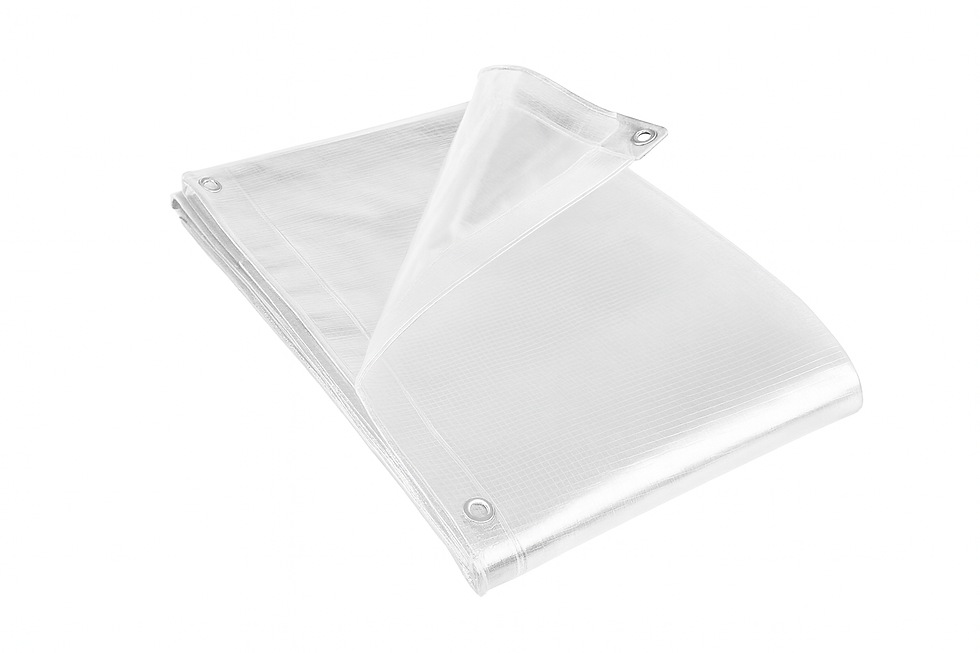How to Secure Tarpaulin for Windy Conditions
- UK Tarps
- Jan 29
- 4 min read
As much as tarpaulins may be somewhat tricky to install especially due to wind, you can make sure that the Tarpaulin Sheet is properly anchored and well placed for proper coverage. Weather protection by tarps can be for outdoor equipment, shelter, construction or agricultural uses; when well anchored the tarp will remain intact during high winds. This is a step-by-step guide to use when you want to make sure your tarpaulin does not move no matter the winds.
Understanding the Importance of Proper Securing
In a windy environment, a tarpaulin that has been stretched merely can easily turn out to be one. An unsecured tarp not only doesn’t do its job but also becomes a possible danger to nearby objects or even people. Installation of it right enables the tarpaulin to remain in position, continue with its protective work, and also avoid such mishaps that could occur. It is critical when specify the securing techniques and materials to use to meet these objectives.
Choosing the Right Tarpaulin
The nature of the tarpaulin should be considered first to avoid or minimize wind troubles Majority of tarpaulins available blow off due to their lightweight nature and frail construction. A heavy-duty tarpaulin is preferred particularly in windy situations as due to it being denser it will not easily be blown away as will a normal tarpaulin. In equal measure, the kind of tarps with reinforced edges and metal grommets are more suitable for firm anchorage. Such features give multiple points for an object to center on as well as help to minimize tearing when subjected to pressure.
Preparing the Area
Step two: Some preparation work must be done before you try to secure the tarpaulin In addition, you need to get the area where this tarpaulin would be used ready beforehand. Remove any low-hanging branches and brush that will interfere with the tarp or the flying debris during a storm. If you are bending over an object for instance a stack of material or equipment make certain that it will not topple. A good ground reduces movement which is very essential if the tarp is to remain in position most of the time.
Anchoring the Tarpaulin
Finding ways to ensure that the tarpaulin will not flap not lift during windy conditions is the solution to the problem. It is done by placing it on the area of interest with a good level of compactness and no wrinkles or slacks. Guas cannot be easily caught by the wind if the tarpaulin’s surface area which is exposed to the wind is minimal It is therefore necessary to pull it as tight as you possibly can.
Screw in hooks on the edges of the fabric through the grommets or eyelets and then secure your strong ropes, bungee cords, or tie-down straps. These fasteners should be attached to more or less immovable structures like stakes, poles, and other equally massive structures like sandbags.
The Clear Tarpaulin needs to be tight but not too tight because that becomes a cause of tearing during high winds.
If you want to fix the tarp to the ground then use stakes or ground pegs that will help to anchor it. Push the stakes into the ground at an angle to the tarp to achieve the most friction that is possible. Secure the ropes or straps firmly to the stakes and make sure all the points where the ropes or straps touch the ground coincide with the corners of the tarp.
Creating Wind Resistance
But in especially windy circumstances more actions can prevent the tarpaulin from unfixed. According to Askelimdorj, there is a method of placing additional weight along the edges and corners of the tarp. This you can do with sandbags, bricks, or any other heavy item you happen to have within the vicinity. Laying these weights directly on the tarp-entails eliminates the possibility of tarpendlifting and puts little stress on the grommets and fasteners.
If at all possible, ensure there is a wind barrier such as a fence or a wall around that area together with hedges. These structures assist in deflecting the wind and hence minimizing its regeneration force on the tarpaulin walls. A windbreak can drastically improve how secure the tarp is particularly where the structure is located in an area of windswept terrain.
Regular Monitoring and Maintenance
In windy periods even the most secure tarpaulin needs adjustments at one time or the other. Check the tarp and all of the points of fastening from one point to another to make sure that all are in place and tight. Any signs of strain and tear on ropes and grommets or shifting in the weight must be attended to as soon as they are noticed. However, to ensure that your tarpaulin lasts for a long period, several more considerations must be made to it. Wash the tarp after use to ensure that none of the dirt or debris weakens the tarp and makes it less effective for use. Store it where it will not be exposed to heat or moisture when it is not being used.
Conclusion
To ensure a Tarpaulin that can weather windy conditions, Touchable Opacity must have the right procedures, materials, and constant monitoring. When properly selecting the high-density tarp, and affixing it to the body portion that you wish to cover, it doesn’t move around even if there is heavy wind, and also if you are adding weights or creating wind barriers, you can make it even more effective and reliable. These measures make your tarpaulin secure and offer the expected defense in harsh climate situations.




Comments